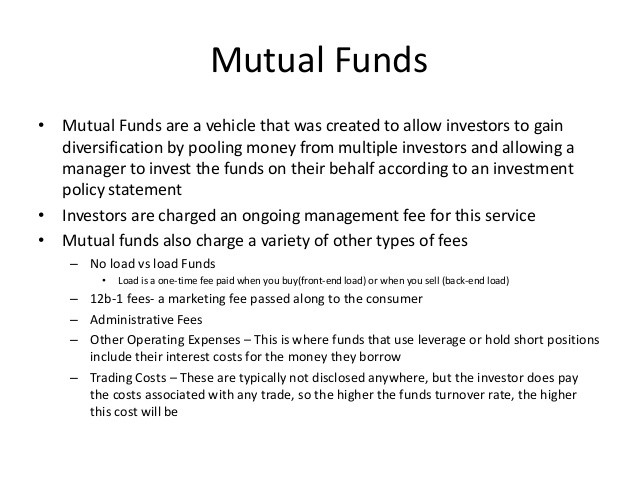Investing 101 An Introduction to Index Funds and Passive Investing
Post on: 13 Апрель, 2015 No Comment

Published on December 10th, 2008
This is a guest post from ABCs of Investing . a new site for novice investors. ABCs of Investing offers two short and simple investing posts each week.
Personal finance bloggers are vocal proponents of passive investing in index funds and exchange-traded funds. But not everyone knows much about these, and not a lot of bloggers do a good job of explaining the basics of passive investing. This post is intended to explain the basics along with the basics of the basics!
I was inspired to write this article because of two separate but identical conversations I recently had with friends. They went something like this:
Friend: What do you invest in?
Me: I do passive investing. You know investing in index funds and ETFs. ETFs are kind of like index funds.
Friend: I see [Blank stare.]
Me: Do you know what an index fund is?
Friend: Nope.
Me: Its a fund that invests in all or most of the stocks of a stock market index and gets a return which is equal to the index return minus a small fee.
Friend: I see [Blank stare.]
Me: Do you know what a stock market index is?
Friend: Nope.
Me: I see.
With active investing, an investor tries to pick stocks that will outperform other stocks. With passive investing (also known as index investing or investing in index funds) an investor simply uses mutual funds to buy all of the stocks in the market. The basic idea is that with greater diversification and lower costs, a passive investor will generally do better than someone who buys actively-managed mutual funds.
Lets cover some of the basic facts that my friends need to learn in order to understand passive investing.
What is a stock market index?
A stock market index (or just index) is a number that refers to the relative value of a group of stocks. As the stocks in this group change value, the index also changes value.
For example, an index might have a value of 1000 points at the beginning of the day. If the stocks in that index rise in value by 1% during the day then the index will be at 1010 points at the end of the day. Does this sounds familiar?
The Dow Jones Industrial Average (commonly just called the Dow) and the S&P 500 are two examples of stock market indexes. Most people (including my friends) who think they dont know what an index is, in fact probably have a reasonably good idea.
What are index funds?
An index fund is a mutual fund that invests in the same stocks that are contained in a stock index, in the same proportion as in the stock index.
Imagine a stock index lets call it the ABC Index that contains two stocks: IBM and Google. Lets say that the ABC Index is currently made up of 60% Google and 40% IBM. If an index fund is based on the ABC Index, then it too will also invest in Google and IBM 60% of the index fund will be Google and 40% will be IBM.
These percentages will change as the values of Google and IBM change. If the price of Google stock increases and the price of IBM stock decreases then the index will change so that maybe 65% will be Google and only 35% will be IBM.
The two main arguments in favor of index funds (and passive investing) are:
- Most managed mutual funds cant beat their index over any length of time, and it is impossible to predict which ones will beat the index in any given time period.
- The significantly lower costs of index funds will ensure that, on average, index fund investors will have better returns than their managed mutual fund counterparts.
If you assume that the average mutual fund will earn the same return as the stock market index minus fees, then an index fund will outperform the average mutual fund because it has lower fees.
As an example, if a managed fund XYZ earns the same 8% return as the S&P 500 in 2009 but it charges a 1% fee, then the XYZ return will be 7%. If the ABC Index fund is based on the S&P 500 and only charges a 0.25% fee then the ABC Index fund return will be 7.75% which is three-quarters of a percent higher than the average managed mutual fund.
Over time, that difference is significant. After 25 years, the investor with the lower fees will have 19% more money invested than the investor paying the higher fees.
Passive investing is easy
If you want to get into passive investing, then I suggest doing some more reading on the topic, as well on possible asset allocations. Some books you might consider include:
- The Little Book of Common Sense Investing by John Bogle
- The Four Pillars of Investing by William Bernstein
- The Smartest Investment Book Youll Ever Read by Daniel Solin
Regardless of whether you believe that index funds are better than managed funds, its certain that passive investing is much easier. You dont have to analyze mutual funds or stocks just pick some basic index funds and away you go!
GRS is committed to helping our readers save and achieve their financial goals. Savings interest rates may be low, but that is all the more reason to shop for the best rate. Find the highest savings interest rates and CD rates from Synchrony Bank. Ally Bank. GE Capital Bank. and more.














